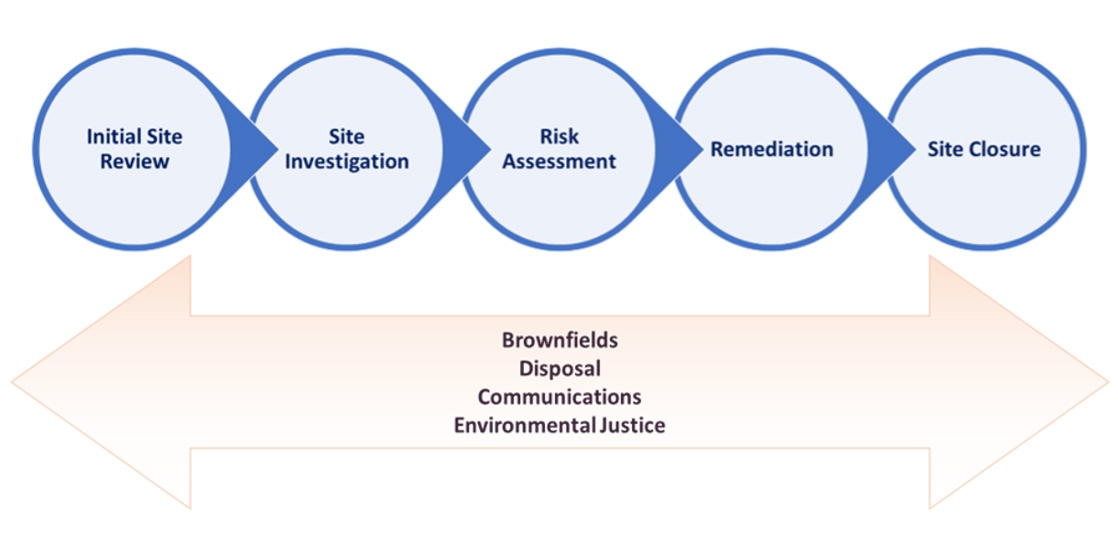Remediation PFAS Guidance serves entities addressing PFAS releases at sites enrolled in a MPCA Remediation program. In 2021, the MPCA published the PFAS Blueprint to identify current strategies for addressing PFAS. In 2022, the PFAS monitoring plan was launched, and Appendix E identifies criteria for entering the Remediation program.
The Remediation PFAS Guidance uses an adapted life cycle approach that is consistent with the Minnesota Environmental Response and Liability Act (MERLA) and the Resource Conservation and Recovery Act (RCRA) framework. The guidance provides consistent and predictable instructions for addressing PFAS contamination from investigation to clean up. It operationalizes the strategies identified in the PFAS Blueprint and expands upon the criteria established in the PFAS Monitoring Plan.
Guidance structure
Guidance was developed by the MPCA with significant input from internal and external stakeholders that represent the various organizations engaged in addressing PFAS contamination. The document is organized according to nine sections: five life cycle stages and four cross-cutting areas.
The life cycle stages are sequential steps consistent with existing regulatory frameworks.

Cross-cutting areas are non-sequential steps that may be present throughout the duration of a life cycle.
Each section is available as a standalone document and practitioners are encouraged to use the sections that apply to their specific site and stage in the process. References, links to other sections, and resources are available in each document.
For PFAS related questions that are not addressed in the Guidance, reach out to the MPCA project team assigned to your Remediation site.
Note: this guidance is based on currently available scientific data. It is recognized that knowledge regarding PFAS is evolving, and future versions of this guidance will incorporate emerging science and data.